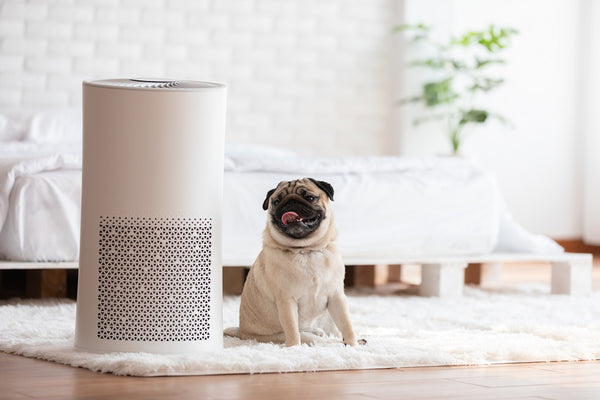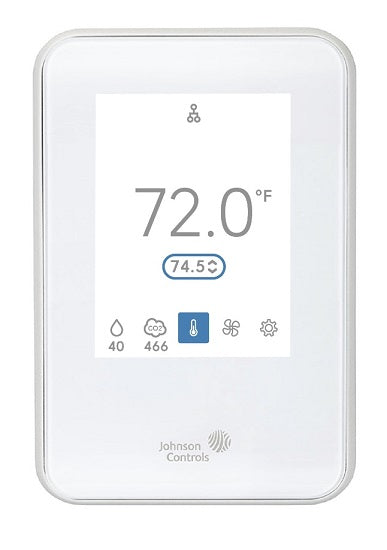
Indoor air quality (IAQ) is crucial for our well-being, but not everyone understands why indoor air quality is important.
The air quality in buildings leaves a lot to be desired even though we spend most of our lives indoors. Poor indoor air quality is responsible for over 1.6 million deaths in 2017 alone.
How can you improve indoor air quality in schools, hospitals, and commercial buildings? Keep reading to find out.
What Is Indoor Air Quality (IAQ)?
Indoor air quality (IAQ for short) is a concentration of thermal conditions and airborne contaminants in public and commercial buildings. The air affects the comfort, health, performance, and overall well-being of indoor occupants. Consequently, poor IAQ can lead to severe diseases, allergic symptoms, and reduced lung function.
Air quality is crucial for schools and healthcare facilities. High levels of airborne pollutants are often caused by poor building construction, infrequent maintenance, and cheap ventilation.
Now, what is an acceptable indoor air quality level? According to several standards and regulations, proper IAQ is found in buildings where most occupants don’t suffer from odor and sensory irritation.
But how do you measure what is good indoor air quality? Let’s talk about the causes of bad IAQ to answer this question.
Causes of Poor Indoor Air Quality

You probably know what causes air pollution. But don’t let the smell of air fresheners trick you — indoor air isn’t much cleaner. Now, let’s see what causes poor indoor air quality most often.
Dust
Dust builds up in buildings with insufficient ventilation, cheap air conditioning, and periodic cleaning. Tiny dust particles accumulate from shoes, fabric and textiles, leaky doors, and windows.
Even your HVAC systems can be one of the sources of poor indoor air quality. Leaky air ducts, holes between the ductwork, and dirty filters allow dust to pass and accumulate in your rooms.
Cigarette and Cigar Smoke
Cigarette tobacco smoke contains many toxic chemicals, such as formaldehyde, tar, and carbon monoxide. Cigars have most of the same harmful compounds, although they are present at different levels. The worst part — even after the smoke is gone, some particles will linger on skin, fabric, and clothing.
Mold
Moisture and mildew are created when the temperature indoors and outdoors is too different. For example, it happens when the weather outside is low while the room temperature is warm. This problem is common in all types of buildings.
The commercial settings usually suffer from poor equipment that leaks water, which results in moisture buildup.
Pollutants
High levels of chemicals and carbon dioxide (CO2) can lead to potential health problems. For instance, CO2 in the atmosphere affects your sleep, productivity and leads to infectious disease.
However, carbon dioxide affects indoor air quality as well. Many pieces of office equipment and building materials emit chemical pollutants, and it’s only made worse with cheap HVAC equipment.
Effects of Poor Indoor Air Quality

Bad air quality in buildings has been linked to respiratory problems, irritations, and even long-term effects such as increased cancer risk.
Let’s talk about the health effects of poor indoor air quality in different building environments.
Indoor Air Quality in Schools
Most indoor air problems in school are subtle and don’t lead to easily recognizable health effects. But you need to account that children spend over six hours per day on average. Prolonged exposure to poor air quality can cause children and school staff to suffer from:
- Allergies
- Aggravating asthma
- Headaches
- Eye irritation
Many of these symptoms are caused by stress, noise, and even poor lighting. However, you can avert them by installing indoor air quality tools for schools, primarily proper ventilation tools.
Office Building Indoor Air Quality
IAQ should be a significant concern for companies and their employees. Average US residents spend 90% of their work in office buildings. Therefore, pollutants in office environments can impact the worker’s well-being and increase the risk of illness.
Most buildings don’t have severe problems with air quality. However, even well-managed offices often suffer from poor IAQ and cheap HVAC systems.
According to the EPA’s 1989 Report, better indoor quality leads to higher productivity and improved decision-making. That’s why in addition to the effects of indoor air quality on human health, IAQ also affects businesses.
Indoor Air Quality in Hospitals and Other Healthcare Facilities
Healthcare facilities are complex systems with many users participating in technological, medical, and other daily activities. According to a report on IQA in hospitals, polluted indoor air causes and worsens about half of all illnesses.
Therefore, good air quality in medical facilities is a necessity rather than convenience. Cheap or improperly placed ventilation often leads to mold or funding, which causes allergic responses in patients, hospital staff, and visitors. On the other hand, proper control and management of hospital indoor air quality lead to more rapid improvements of patient’s condition.
How to Test Indoor Air Quality

Improvement of your IAQ starts with indoor air quality testing. How do you identify the level of airborne pollution the best?
It’s easy. You need good indoor air quality testing equipment. We recommend getting a good IAQ sensor that offers measurements like:
- Humidity. The level of humidity shows your office’s environment for mold and fungi growth.
- Volatile Organic Compounds (VOC). Chemical gasses that emit from solids and liquids and lead to adverse health effects.
- Carbon monoxide, carbon dioxide & radon. Colorless and odorless gases affect well-being and cognitive function.
- Particulate matter (PM 2.5). This measurement indicates how much dust and allergens are in your air.
- Air Quality Index (AQI). The measurement used by EPA to determine the effect of air on your health (the higher the AQI value, the greater the risk for health).
Make sure that your indoor air quality sensor offers these measurements. But you can always get IAQ equipment that provides additional data.
How to Improve Indoor Air Quality?

Improving the air quality in commercial environments is challenging. Schools, larger offices, and healthcare facilities are much more complex than private homes. Therefore, you might need to try several methods and monitor results until you get the desired result.
Now, let’s see some of the most popular indoor air quality improvement solutions.
Sufficient Ventilation
Ventilation and indoor air quality are closely linked. Tightly packed and energy-efficient commercial buildings need proper ventilation to keep the air flowing. Otherwise, airborne contaminant would have nowhere to go.
The indoor air quality can be improved with good ventilation. Just keep your HVAC systems working, and be sure to unblock air vents pathways. You should also allow new air to enter the building, so leaving windows open from time to time is necessary.
Source Control
Source control is often the most cost-effective IAQ improvement solution. For example, it usually works better than air dilution, filtration, and air cleaning.
Here’s how you can source control the indoor air quality:
- Determine the priority pollutants
- Dilute the contaminants (move the most pollution producing equipment to ventilated areas)
- Contain the pollutants (apply coverings)
- Reduce the VOC level by installing specialized equipment and carpets
In the US, source control strategies are developed and enforced by the state and national governments.
Air Cleaning
We recommend getting commercial-grade equipment to keep the air quality at an acceptable level. This equipment includes:
- Air Scrubbers
- Humidifiers
- Dehumidifiers
- Air Cleaners
- Air Purifiers
These devices have different purposes. For instance, air cleaners trap specs of dust and allergens in the air. Air purifiers, on the other hand, remove viruses, bacteria, and chemicals.
Maintaining Temperature & Humidity
Keeping optimal levels of temperature and humidity is one of the most important elements of indoor air quality. It prevents mold, fungi and makes the environment more comfortable.
You can maintain the temperature in the building with HVAC equipment. The hygrometer and dehumidifiers can help you keep the indoor air quality humidity at bay.
Cleaning HVAC Systems

You should keep your HVAC equipment maintained and regularly cleaned. Just like the ventilation, good indoor air quality and HVAC systems are interlinked.
Do you want to keep the air in your facility clean? Make sure to change the filters regularly to prevent dust from circulating.
And don’t forget about the air ducts! You need to ensure they are sealed entirely and conduct regular duct cleaning to improve the indoor air quality.
Conclusion
Keeping the air fresh and clean is difficult in commercial environments. If you want to improve the indoor air quality — you need to buy high-quality equipment. It includes HVAC systems, air cleaners, purifiers, and, of course, IAQ sensors.
Blackhawk Supply offers a vast selection of indoor air quality testing equipment for offices, schools, healthcare facilities, and residential buildings. Check it out!


